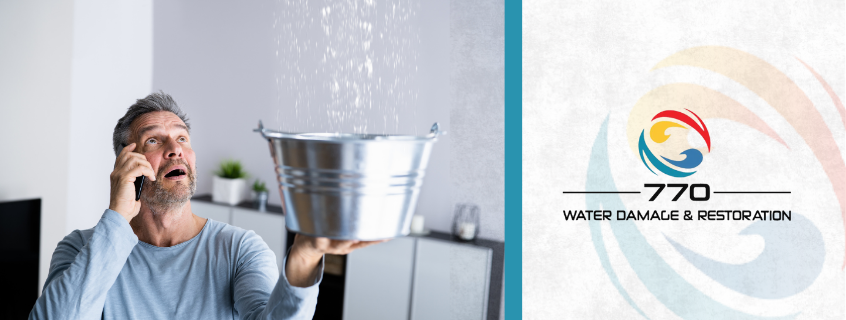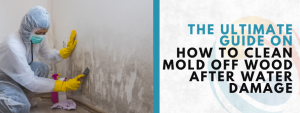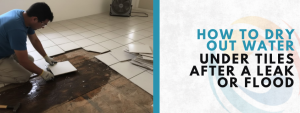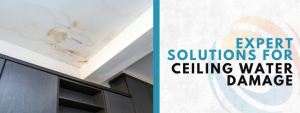
When reddish-brown stains appear on your walls, it might seem like a minor issue. But rust forming on walls is often a sign of a more serious underlying problem. It’s not just about appearances—it can signal water damage, hidden leaks, or poor ventilation in your home. Understanding why rust is showing up and what it means can help you take action before things get worse.
Rust forming on walls usually happens when moisture reaches metal elements within or behind your wall. That could include nails, screws, studs, or any metal components used in construction. When moisture, air, and metal mix, corrosion begins—and you start seeing rust forming on walls. If left untreated, it can grow, stain deeper, and signal bigger problems beneath the surface.
Why Rust Happens Indoors
You might wonder why something like rust—often associated with outdoor fences or old tools—is showing up inside your home. The answer lies in three ingredients: water, oxygen, and metal. Combine those, and you’ve got the perfect recipe for rust.
Here are some reasons rust forming on walls happens inside:
- Metal Behind Walls: Homes often use metal studs, fasteners, or wire mesh. When these are exposed to moisture, rust forms.
- Leaky Pipes or Roofs: A pipe leaking behind the wall can soak nearby materials, causing rust where metal is present.
- Humidity and Condensation: In places like bathrooms or poorly ventilated basements, moisture lingers in the air. This creates ideal conditions for rust to form on or inside walls.
So, if you spot rust forming on walls, it’s a strong hint that water is somewhere it shouldn’t be.
What Rust Tells You About Your Home’s Condition
Rust forming on walls is more than just an eyesore—it’s your home’s way of warning you. That reddish discoloration could be pointing to serious problems you can’t yet see.
Here’s what it might be telling you:
- There’s a Water Leak Nearby: Whether from a pipe, roof, or window, leaking water often causes rust in its path.
- The Room Lacks Proper Ventilation: Moisture builds up in spaces without airflow, leading to both rust and mold.
- Mold Might Be Lurking: If moisture is enough to cause rust forming on walls, it’s also enough for mold to grow.
- Metal is Aging or Corroding: Old metal inside walls may be breaking down and showing through as rust.
If rust keeps appearing in the same spot or starts spreading, don’t wait—your home is signaling trouble that could get costly.
Where and How Rust Appears on Walls
When rust shows up, it often follows a pattern based on what’s behind the wall or how the room functions. The location of the rust can give you clues about what’s going wrong.
Here are a few common examples:
- Rust Around Light Switches or Outlets: This may mean water is leaking near electrical wiring—a serious hazard.
- Ceiling Corners Showing Rust: Likely caused by water from above, maybe due to a leaky roof or upstairs plumbing.
- Rust in Basements: Basements often have poor ventilation and higher humidity, which causes rust forming on walls over time.
- Bathroom Wall Edges: Showers and sinks produce steam and moisture, especially if there’s no exhaust fan or ventilation.
When rust forming on walls lines up with areas near water or electrical sources, it’s time to dig deeper and fix the cause.
What You Can Do About It
If you’re dealing with rust forming on walls, you’re probably wondering what’s next. Can you clean it up yourself, or do you need expert help?
Try These Simple Fixes First:
- Check for Leaks: Look around windows, ceilings, or plumbing lines for signs of water dripping or staining.
- Ventilate the Room: Use fans or open windows to let moisture escape, especially in steamy rooms.
- Use a Dehumidifier: This helps pull extra water from the air and slows down rust.
- Sand and Repaint: If the rust is surface-level, lightly sand it, then apply a rust-blocking primer and paint.
But Call a Pro If You See:
- Recurring rust in the same area.
- Signs of mold or musty smells.
- Rust near power outlets or wiring.
- Water damage that feels soft or soggy to the touch.
When rust forming on walls keeps returning, it usually means there’s a hidden issue that only a pro can spot and solve. You can always get a reliable expert to evaluate what’s really going on if you’re unsure.
The Risks of Ignoring Rust
It might be tempting to wipe away the stain and move on, but ignoring rust forming on walls can lead to bigger headaches—and bigger bills.
Here’s what could happen if rust goes untreated:
- Weakened Walls: Water behind walls causes materials like drywall and plaster to soften and lose strength.
- Mold Growth: Rust means moisture, and where there’s moisture, mold is usually nearby.
- Electrical Hazards: If rust forms near outlets or wiring, it may mean water is contacting live electrical parts.
- Skyrocketing Costs: What could have been a simple fix becomes a major repair if you wait too long.
The moment you spot rust forming on walls, you’re being given an early warning. Acting fast could save thousands in repairs later.
What Type of Wall You Have Matters
The kind of wall you have changes how rust appears and how it spreads. Each surface reacts to water differently and gives different clues when something’s wrong.
Here’s a breakdown:
- Painted Drywall: You might see reddish spots or small streaks where metal nails or fasteners are rusting beneath the paint.
- Plaster Walls: These might crack slightly, and you’ll notice a rusty tint along the crack lines.
- Concrete or Basement Walls: Rust may show up at corners or near the floor due to foundation seepage or poor drainage.
- Ceiling Tiles: If there’s a brownish ring with a rust color, the water is likely dripping from above.
- Bathroom or Kitchen Tile Walls: Rust on grout lines or corners could point to high humidity and rusting metal beads or nails behind the tile.
In each case, rust forming on walls means water has found a way in—and it’s trying to get your attention.
How to Prevent Rust from Showing Up Again
Once you’ve cleaned the rust, you’ll want to make sure it doesn’t come back. The key is keeping moisture away from metal.
Use these tips:
- Install Exhaust Fans: In bathrooms, kitchens, and laundry rooms, fans can carry steam out and prevent condensation.
- Fix Leaks Quickly: Small leaks turn into big problems fast. Keep an eye on pipes, windows, and roofs.
- Seal and Paint with Moisture Barriers: Use paint designed to block water, especially in basements or steamy rooms.
- Use Dehumidifiers in Damp Areas: Pulling moisture out of the air keeps it from settling on walls.
- Check Roof and Gutter Drainage: Water that pools near your home’s foundation can lead to moisture problems inside.
By staying one step ahead, you can prevent rust forming on walls from becoming a regular—and expensive—issue.
Choosing the Right Wall Panels for Moisture-Prone Areas
Thinking about updating your walls? Choosing the right panel materials can make a big difference in how well your walls stand up to moisture and rust.
Here are some of the most popular wall panel types:
- Shiplap: Offers a rustic look and easy installation, but needs sealing in wet rooms to prevent moisture problems.
- Beadboard: Decorative and great for hallways or kitchens, but not ideal for wet areas unless treated with water-resistant coating.
- Reclaimed Wood: Beautiful and eco-friendly, but it must be sealed properly to prevent water absorption.
- Engineered Wood Panels: Often designed with moisture barriers, making them a smart choice for durability.
- Cedar Panels: Naturally resistant to moisture and bugs—excellent for bathrooms or humid areas.
If rust forming on walls has been an issue, choosing moisture-resistant wall panels is a great preventive step. These materials not only look good but help protect your home from future water-related damage. And if you’re unsure about installation or how to seal the right panels, you can always reach out to skilled restoration professionals who can guide you through it.
Final Thoughts: Rust Is a Warning You Shouldn’t Ignore
Rust forming on walls is more than a cosmetic problem—it’s a sign. It tells you that metal, water, and air are interacting somewhere inside or on your wall, and that means something’s not right.
Think of rust as your house waving a small red flag before it turns into a full-blown emergency. If you see rust forming on walls, don’t just wipe it off. Investigate. Repair. Prevent. Your walls are talking—make sure you’re listening.
And if it feels like too much to handle, or you just want peace of mind, remember that professional help is only a click away. Don’t wait until a little rust becomes a lot of damage.
Frequently Asked Questions: Understanding Rust Forming on Walls
Why am I seeing rust forming on my walls at home?
Rust on walls usually means moisture is reaching metal elements inside or behind the wall. This could be due to hidden leaks, poor ventilation, or high humidity.
Should I be worried if I notice rust in one spot?
Yes—rust forming on walls, even in a small area, can indicate hidden water damage. It’s best to inspect the area to prevent further issues like mold or wall weakening.
Can I clean the rust myself, or do I need a professional?
You can clean light surface rust, but if it returns or spreads, you’ll likely need professional help. Recurring rust often means deeper water or structural problems.
Is rust dangerous for my home’s structure or my health?
Rust can weaken walls and signal mold growth, which may affect your health. It’s important to address the root cause quickly to avoid serious damage.






